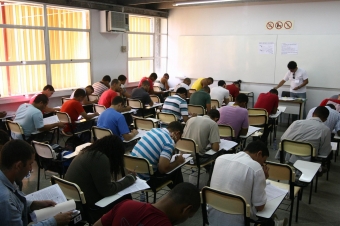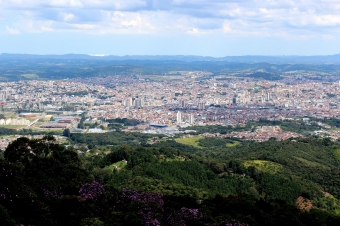Summary:
It is intended that the student who is just starting the course becomes familiar with the theme of state-owned enterprises and the various activities that they develop. All students participate in the debate through research, submitting questions, clarifying concepts and the discussion of previous reading of text, encouraging the understanding of the theme without losing the sight of the complexity that around it.
Objective:
THE CLASS IN THE COURSE:
The class goes deep inside an important aspect of the theme, "Administrative Organization". The students should realize that state companies are just one of the legal structures that the Public Administration has at its disposal to achieve certain purposes, together with local authorities and foundations, enabling them to distinguish them.
SPECIFIC GOALS:
- To put students in touch with state-owned enterprises, so that the legal discussions have as a reference existing effective companies in the Brazilian Public Administration.
- To discuss the possible uses of state-owned structure to the achievement of state's interest activities.
ABILITIES AND SKILLS TO BE DEVELOPED:
There are three categories of skills and competencies to be developed with this dynamics:
- General Skills: the understanding and the academic legal text discussion, the power of synthesis and the search of the data.
- Legal Skills: identification, rules, of the competencies legally assigned to state entities.
- Skills: to enable the student to identify in legal texts and other legal relevant data for the characterization of state enterprises and the delimitation of their skills.
Dynamics:
Method: Socratic dialogue.
Requirements: Preview: mandatory reading of the academic text that discusses the possibility of exercising its power of administrative police by state enterprises. In the classroom: internet research of legislation, doctrine and official electronic sites of the organizations.
- Mandatory reading: “Estatais com poder de polícia: por que não?”. Author: José Vicente Santos de Mendonça. Em Revisa de Direito Administrativo, vol 252, (009), available at: virtual library of the Fundação Getúlio Vargas, link: http://www.google.com.br/url?sa=t&rct=j&q=&esrc=s&source=web&cd=2&ved=0C... .
- Entities list used in the exercise with the website link
Introduction to the dynamics: It was given to each student the name of an autarchy or a state company (federal, state or municipal).
DEVELOPMENT OF THE DYNAMICS:
Part 1 - Concepts and dogmatic categories.
1. The dynamics began with the split of the blackboard into two categories: autarchy and state enterprise. It was encouraged that students pointed elements to establish differences between them. The information was included on the blackboard by the professor.
2. The students were asked what were the various activities developed by the Government, that were seen in previous classes: exercise of authority, police power, regulatory power, granting power, industrial and commercial activities, contracting, personnel management, etc. The information was also included on the blackboard.
3. It was discussed the possibility of differentiation of these entities subject to the legal regime of public law from the classification of its activities in exclusive state activities (typical of authority) and common activities.
4. It was discussed the arguments for and against the police power exercised by state-owned enterprises (those arguments contained in the obligatory previous text reading).
Part 2 - Entities and their characteristics: what is the category?
After the construction of the conceptual mark, the students were asked to participate by presenting the entity assigned to them at the beginning of class and providing a place for it within the categories of the board (autarchy or state enterprise, exclusive activity of state or common activity). The information for them to justify this choice was obtained via an internet search during the class (favoring the use of technology in the classroom for academic purposes). This activity was facilitated by the professor, who along the class, made comments about the fundamentals brought to the class.
End of the dynamics: the professor made a final reflection demonstrating that in many cases, the same activity can be performed by different entities from the indirect administration, and for other activities, only the structure of state-owned company or local autarchy is legally feasible. The professor recalled the existence of differences in the legal systems of these entities and these activities.
Attention in the classroom: It was necessary the preparation of the student facing the key role that he would exercise in dynamics. If there is not the possibility of using the internet at the time of the class, the entities should be distributed in advance so that he can perform the search.
Evaluation:
- FEEDBACK: only comments at the end of class, about the overall impression of the activity.
- GRADE EVALUATION: the activity did not have a specific grade, counting only for the overall grade of the students’ participation in the course.
Observation:
It was necessary the delivery, to each student, of the name of a public entity. It was demanded the previous knowledge of the professor about all distributed entities, once the activity demanded the immediate return in relation to the legal nature and the activities they do. The theme of the state companies and its challenges are developed in two meetings, each one with a specific goal and different methodology. This record, the Socratic dialogue, may precede or proceed another meeting about the need of public tender in state enterprises.
Copyright from the cover page image:
Image: "Atividades de empresas estatais", author: "Ramon Alberto dos Santos", under the CC BY-NC-SA 2.0 license, made fom the modification and junction of the folowing pictures in Creative Commons: 1) UHE Estreito (MA), flicker "Programa de Aceleração do Crescimento", CC BY-NC-SA 2.0; 2) BRT Eixo Sul (DF), picture by Geilson Lima / may 2014, flicker "Programa de Aceleração do Crescimento", CC BY-NC-SA 2.0; 3) Aeroporto de Congonhas (SP) - Obras da torre de controle, flicker "Programa de Aceleração do Crescimento", CC BY-NC-SA 2.0; 4) Refinaria do Planalto (Replan) (SP), flicker "Programa de Aceleração do Crescimento", CC BY-NC-SA 2.0





